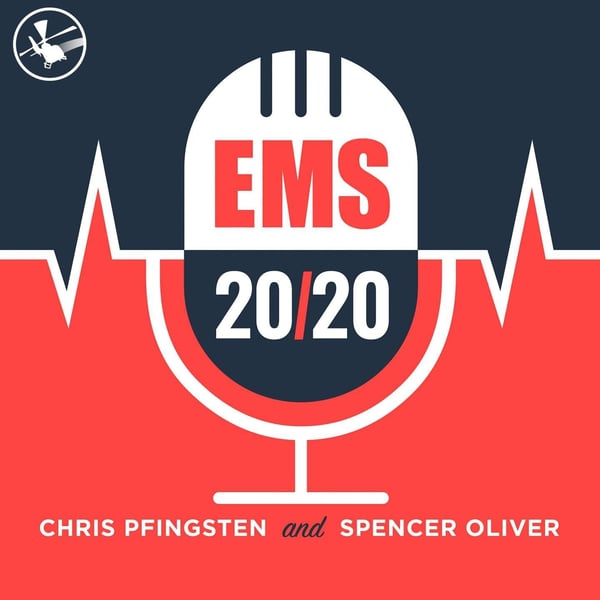Sed8tion Lessons from the Sk8ter Boy
EMS 20/20
Christopher M Pfingsten
4.6 • 775 Ratings
🗓️ 29 July 2020
⏱️ 55 minutes
🧾️ Download transcript
Summary
Transcript
Click on a timestamp to play from that location
| 0:00.0 | You are listening to EMS 2020, a podcast hosted by Spencer Oliver and myself, Chris Finkston. |
| 0:19.9 | We are paramedics with quite a bit of experience, |
| 0:22.8 | ranging from flight paramedicine to ground transportation to even some volunteer work as well. |
| 0:28.3 | EMS 2020 reviews scenarios based on actual out-of-hospital medical scenes. Portions of the scenarios |
| 0:33.0 | are altered to protect the privacy of those involved and to present educational opportunities to the listener. |
| 0:44.9 | All right. |
| 0:45.7 | Welcome to EMS 2020 DeepDive Edition. |
| 0:50.1 | We're going deep. |
| 0:51.8 | Yeah, we do need to address something that was said or a point that we tried to make in our last episode that maybe didn't come across the way that we really wanted it to. |
| 1:02.2 | So in our last episode, we talked about head trauma. |
| 1:05.2 | And in one segment, we began to talk about the signs and symptoms of a brain bleed. |
| 1:10.8 | Yeah. |
| 1:11.1 | And it may have been construed that we were saying, |
| 1:14.1 | don't worry about recognizing the signs and symptoms of intracranial bleeds. |
| 1:18.4 | Absolutely not what we wanted to say. |
| 1:20.0 | It's very important that you recognize those signs and symptoms. |
| 1:23.3 | I think I had made a comment along the lines of just know them for the test. |
| 1:26.8 | What I meant by that is that the scenario we're differentiating between them is probably more important in a testing environment than it is in the field. |
| 1:34.4 | When you're in the field, there's no points for accurately guessing whether it's an epidural or a subdural or what have you. |
| 1:40.4 | You're not a CT scanner, nor do you have one. |
| 1:42.9 | That being said, you absolutely need to know |
| 1:46.1 | the signs and symptoms of epidural and subdural bleeds or any of the types of intercranial |
... |
Please login to see the full transcript.
Disclaimer: The podcast and artwork embedded on this page are from Christopher M Pfingsten, and are the property of its owner and not affiliated with or endorsed by Tapesearch.
Generated transcripts are the property of Christopher M Pfingsten and are distributed freely under the Fair Use doctrine. Transcripts generated by Tapesearch are not guaranteed to be accurate.
Copyright © Tapesearch 2025.

